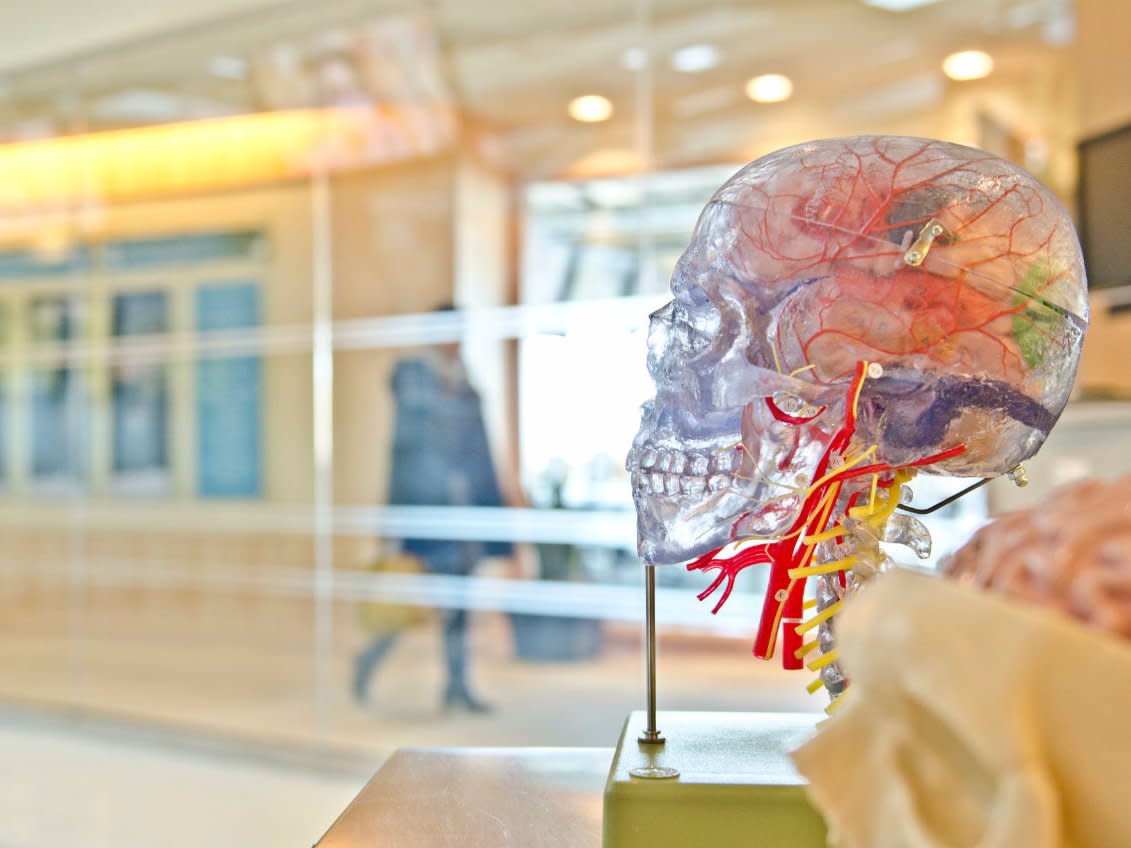There's new evidence that brain activity continues after death

Unsplash / jesse orrico
Death can be a tricky thing to define. When the heart stops, the body is declared dead, but this isn't always absolute.
If someone is brain-dead, they no longer have any brain stem function, but blood can still be pumping with the help of life support machines, effectively keeping the body alive.
People have also been brought back after their heart stops with CPR.
This complicates how doctors define death, especially as nobody has any idea about what happens when we pass away.
New research has added another piece to the puzzle, with one patient showing evidence of brain activity as much as ten minutes after death. The results were published in The Canadian Journal of Neurological Sciences.
Scientists from the University of Western Ontario in Canada studied what happened when four patients in an intensive care unit died. They were all on life support, and the research team monitored their brain activity — measuring something called frontal electroencephalographic (EEG) recordings — when the machines were turned off.
The paper says three patients showed no further activity as soon as the life support machine was turned off, but something intriguing happened with the fourth patient — they appeared to give off the same kind of brain waves we experience when we're in a deep sleep, called "delta wave bursts."
The study was incredibly small to start with, looking at just four patients, and the results get even more narrow when you consider just one of them showed this activity.
The researchers are careful to note that they can't gain too much information from the results, but they did conclude death could be a unique experience for each person. This is because there were very few similarities between the brain activity of the four patients before and after their death.
Other evidence of after-death activity
In 2011, a research team from Radboud University in the Netherlands studied rat brains after they had been decapitated, and found there was a strange burst of brain activity in them about a minute after — known as a "death wave." This suggested the brain and heart didn't necessarily die at the same time.
The Canadian team did not observe this wave in any of the four patients, but of course none of their heads had been removed.
In 2016, two studies examined human bodies after they died, and researchers found that 1,000 genes were still functioning in them several days after death. Even more strange, the activity of these genes actually ramped up after death, rather than slowing down.
Studies like these are interesting for medicine because they have the potential to help with the outcomes of transplant surgeries. They could also be important for understanding what happens to the body when we die, which could have implications for improving doctors' chances of bringing people back after near-fatal accidents.
Understanding what happens after we die is intriguing, but the Canadian team stress they can't really explain what happened in this new research. They mention in the paper that there's a possibility of a human or equipment error that falsely showed the brain activity, but as far as they know the equipment was working properly and no-one messed up.
"Further study of the [EEG] during the withdrawal of life-sustaining therapies will add clarity to medical, ethical, and legal concerns for donation after circulatory determined death," the researchers said.
NOW WATCH: We measured the amount of sugar in big brand drinks – and it was pretty scary
See Also:
Some people subconsciously seek out narcissists to date — here's why
Animated map shows the best states to live for your well-being
A psychologist with 20 years of experience says there are 5 simple ways to improve your self-esteem
SEE ALSO: Deaths from opioid overdoses have jumped — and one age group is being affected at stark rates
DON'T MISS: Death rates for many US 30-year-olds are rising in an 'extremely unusual' way

 Yahoo News
Yahoo News 

